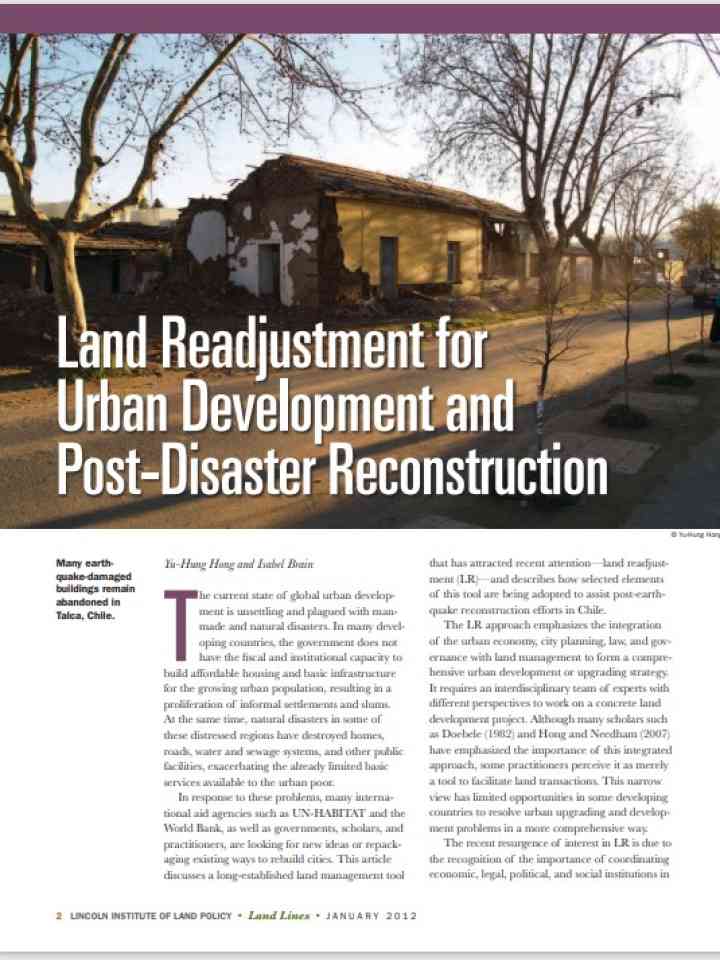Land Readjustment for Urban Development and Post-Disaster Reconstruction
The current state of global urban development is unsettling and plagued with manmade and natural disasters. In many developing countries, the government does not have the fiscal and institutional capacity to build affordable housing and basic infrastructure for the growing urban population, resulting in a proliferation of informal settlements and slums. At the same time, natural disasters in some of these distressed regions have destroyed homes, roads, water and sewage systems, and other public facilities, exacerbating the already limited basic services available to the urban poor.
In response to these problems, many international aid agencies such as UN-HABITAT and the World Bank, as well as governments, scholars, and practitioners, are looking for new ideas or repackaging existing ways to rebuild cities. This article discusses a long-established land management tool that has attracted recent attention-land readjustment (LR)-and describes how selected elements of this tool are being adopted to assist post-earthquake reconstruction efforts in Chile.
The LR approach emphasizes the integration of the urban economy, city planning, law, and governance with land management to form a comprehensive urban development or upgrading strategy. It requires an interdisciplinary team of experts with different perspectives to work on a concrete land development project. A lthough many scholars such as Doebele (1982) and Hong and Needham (2007) have emphasized the importance of this integrated approach, some practitioners perceive it as merely a tool to facilitate land transactions. This narrow view has limited opportunities in some developing countries to resolve urban upgrading and development problems in a more comprehensive way. The recent resurgence of interest in LR is due to the recognition of the importance of coordinating economic, legal, political, and social institutions in the design and implementation of urban (re)development plans. Practitioners are also contemplating the possibility of extending LR from management of peri-urbanization and post-disaster reconstruction to slum upgrading, for example in some rapidly urbanizing A frican cities. T he application of this LR approach to countries where the technique has never been used is still at an experimental stage. Potential pilot projects are being designed, but have not been fully implemented, so further research is needed to test the validity of assertions about this approach.
Explore further
